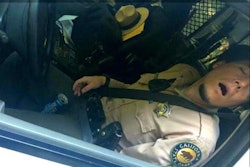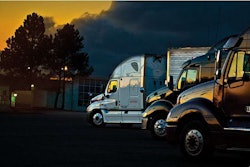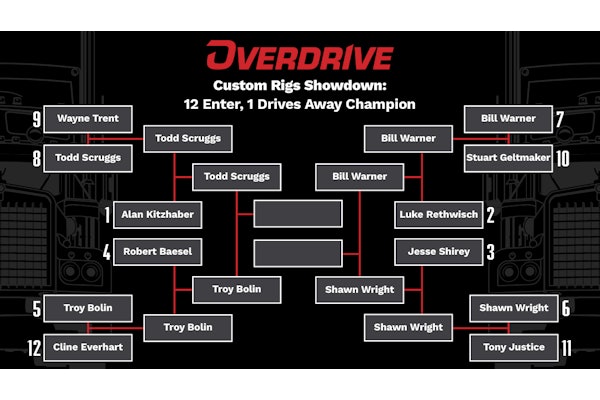Part 1 of this feature detailed the difficult yearend decision coming for owner-operators of 1996-2006 model year trucks.
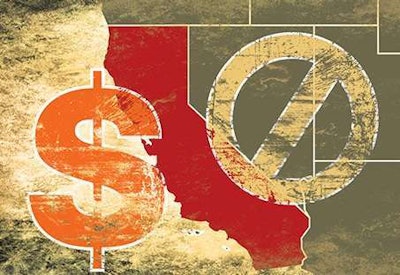 Click through the image to use our interactive graphic to determine your options for getting CARB-compliant under the Truck and Bus rule in 2014.
Click through the image to use our interactive graphic to determine your options for getting CARB-compliant under the Truck and Bus rule in 2014.In addition to the trucks he owns and his leased owner-operators, Lightning Logistics co-owner Joe Hammerslough dispatches independents with their own authority, some of whom routinely work the 400-mile Phoenix-Los Angeles corridor with a goal of decent miles and weekend home time. “Those are lower-grossing freight lanes,” he says, “because it’s only 400 miles.” If you can get $2 a mile, “$800 a day is not a bad living,” he adds, but not enough to sustain the cost of a new or late-model truck. A lot of those operators tell him that when they see regular enforcement from California Air Resources Board of its Statewide Truck and Bus Rule, coming online for small fleets with three or fewer CARB-registered trucks at the end of the year, they’ll just stop running their trucks.
But Hammerslough could be on the hook, too, for actions taken by CARB inspectors against such operators. It’s not just the equipment owner who’s responsible for compliance, a recent Ironman Parts webinar spelled out. Citations levied by CARB against independent or leased owner-operators also can be levied against the entity that sent them, whether broker, dispatching service or leasing motor carrier.
|
OUTSIDE ALTERNATIVES | At the end of the year, there won’t be much wiggle room when it comes to continuing to haul in California for those with noncompliant engines. All the same, here are two very narrow options. Run a pre-1996 engine. Through last year, Galt, Calif.-based independent owner-operator Martin Jez (pictured, below) was operating a 1988 Peterbilt cabover – he’s since boosted his fuel mileage with a 2000 model Freightliner that is in the crosshairs of the expiring small fleet/owner-operator delay in compliance requirements under CARB’s Truck and Bus Rule. Funnily enough, though he sold the 1988, if he’d still been operating it today, he’d be losing some fuel money but would be able to delay a tough decision through the end of next year rather than this one. Pre-1994 engines require no upgrade through the end of 2014, but must be retired from OTR use to remain compliant in California then; the deadline for 1994-95 engines is farther out at the end of 2015. Jez says he’s unsure what he’ll do come the end of the year – he and his wife had contemplated a move to the Midwest to get out from under CARB rules, but their home and children from a prior marriage are in California. Jez says he’ll likely have to go out of state in search of a post-2007 used truck compliant in California – at least one he’s interested in buying. 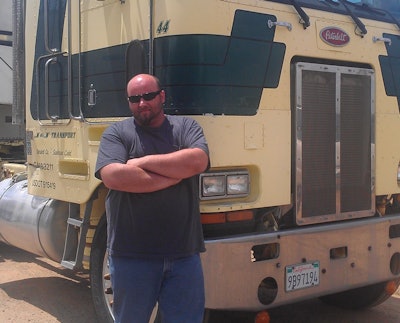 Independent owner-operator Martin Jez Independent owner-operator Martin Jez
Three-day pass. A three-day pass is available at a rate of one per carrier, says Joe Rajkovacz of the California Construction Trucking Association. The owner-operator or fleet “can use it once a year,” he adds. “Save that for when the produce rates get jacked up in late May or early June … as long as you’re compliant with the reefer and GHG rules – all these things intersect.” Owner-operators and fleets can download the three-day pass application form via this link. |

Comments on Overdrive Online suggest CARB just doesn’t have the manpower or the will to enforce the engine requirements. “They have only 100 enforcement people to take care of this debacle,” an anonymous commenter noted under a June story on the yearend upgrade requirements, urging operators to just keep running in the state. “The chances of getting caught are like playing the lottery. Everyone here is still running their junk.”
CARB Public Information Officer Karen Caesar says the agency has “approximately 150 staff in its enforcement program, all of whom can technically enforce the diesel regulations,” as can other CARB staff. Additionally, “selected [local/regional] air districts and ports with which we have [Memoranda of Understanding] can also enforce our diesel emissions regulations.”
According to the numbers, California began enforcement under a new Statewide Truck and Bus program in 2012, opening a total 400 investigations with just $20,325 collected in various penalties. In the field operations-based portion of that program, however, 2,802 inspections were completed that year, with 298 violation notices issued to the tune of $171,050 collected in noncompliance penalties, or about $600 per noncompliant case.
In 2012, the inspection program’s first year, it was the second-most lucrative program overall measured per inspection, behind only enforcement of reefer unit compliance rules. Keep in mind, too, these statistics come from a year in which only about 30 percent of the total number of trucks on the highway, says Rajkovacz, fell under one or another of the DPF retrofit or upgrade requirements – non-small fleet equipment of model years 1996-2004.
Next year, that will include all the small-fleet trucks plus 2005-06 trucks. Given the large pre-buy of 2006 model-year engines, many of which ended up in 2007 model-year trucks, Rajkovacz estimates somewhere between 70 and 90 percent of the diesel vehicle population will be exposed to the regulation.
See Part 1 in the “Left-coast gamble” series for RigDig Business Intelligence’s estimates of the size of the California-running truck population.
Keeping that $600/violation average figure in mind, the possibilities are green indeed when it comes to generating revenue for the state. “Take a scale like Banning,” says Hammerslough. “The number of trucks that cross that scale every day is enormous. One CARB inspector out there could tell CHP (California Highway Patrol) he wanted to see every truck that was 2007 or older – if you don’t have a compliant engine, then, you’d be in some serious trouble.”
 “I’ll just take California off my map.” – Owner-operator Bill Taylor, pictured with his wife, Robyn, and their 2007 Western Star
“I’ll just take California off my map.” – Owner-operator Bill Taylor, pictured with his wife, Robyn, and their 2007 Western StarCaesar says penalties levied for individual violations can range from $300 to $10,000. CARB also takes into account the history of the violating business. If a company is a repeat offender, having flouted CARB rules in the past, fines can be toward the higher end.
Conditions the board must take into account in enforcement actions are spelled out in California legislation S.B. 1402, posted on the agency’s website, and they likewise include a provision for consideration of the financial burden the penalty would place upon the defendant. Resolution procedures include an “opportunity to discuss,” so if you are unlucky enough to be nabbed, you might negotiate a lower penalty.
Owner-operator Bill Taylor, who had looked into the retrofit market to upgrade his 2007 Western Star powered by a 2006 engine, ultimately decided not to change his hardware. Though his fleet, FedEx Ground, had backed off of its attempts to get him to upgrade, he ultimately opted for the operational latitude to choose just where he goes. Today, he and his wife, Robyn, also a driving partner, have leased the Western Star to Landstar, where self-dispatch is the norm. “I’ll just take California off my map,” he says.
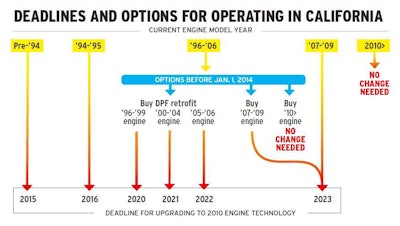 Click through the image to use our interactive graphic to determine your options for getting CARB-compliant under the Truck and Bus rule in 2014.
Click through the image to use our interactive graphic to determine your options for getting CARB-compliant under the Truck and Bus rule in 2014.
